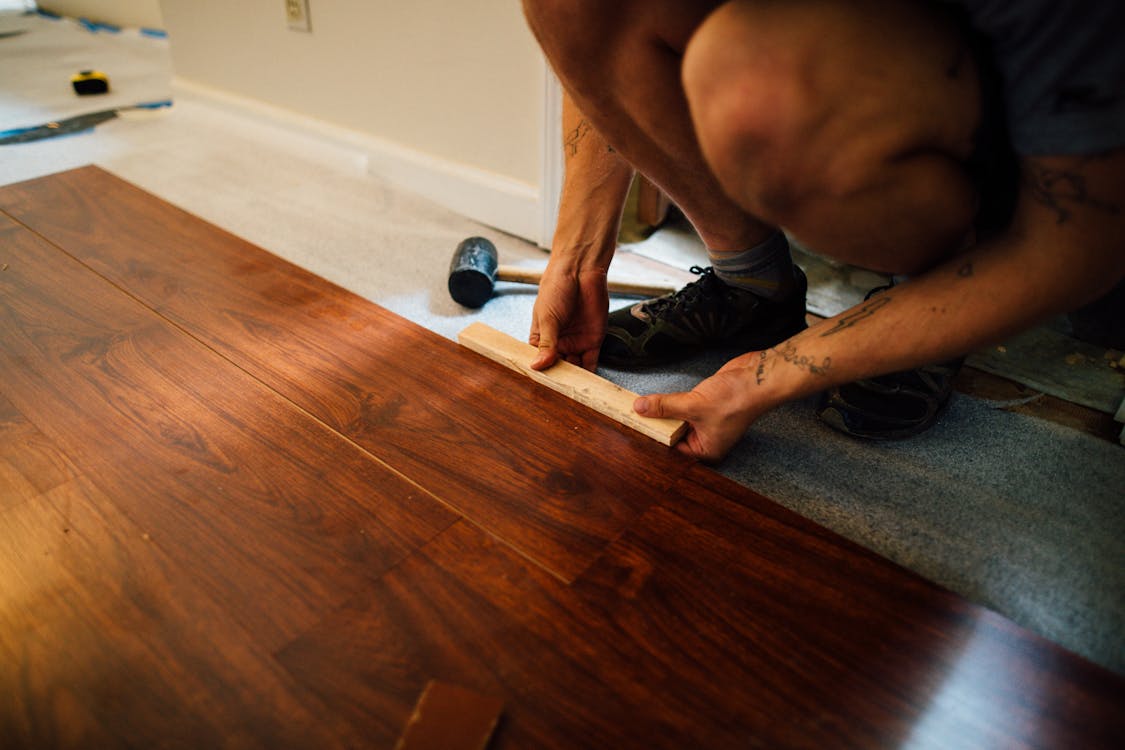Do you want an alternative to solid wood flooring? Although solid wood is a classic choice, some may have better options. There are numerous alternatives, whether you want a less expensive option or a more durable and easy-to-maintain flooring material. In this blog post, I will discuss some of the best solid wood flooring alternatives, including their benefits, best uses, technical specifications, and what distinguishes them from solid wood.
 |
| Photo by Kelly from Pexels |
Bamboo Flooring
Bamboo flooring is more eco-friendly and long-lasting than solid wood flooring. It is constructed of bamboo, a renewable resource that grows much faster than traditional hardwood trees. Bamboo is a durable and long-lasting material resistant to moisture and insect attack. It is easy to clean and maintain and is available in various colors and styles. Bamboo flooring is best suited for moderate-to-low foot traffic and should not be used in areas with excessive humidity or moisture.
Engineered Wood Flooring
Engineered wood flooring comprises layers of wood that have been pressed together and are topped with a solid wood layer. It is a long-lasting, moisture-resistant option used in places where solid wood would be inappropriate, such as basements and bathrooms. Engineered wood flooring is easy to install and available in various colors and styles. It is most effective in areas with moderate to high foot traffic and fluctuating humidity levels.
Luxury Vinyl Plank (LVP) Flooring
LVP flooring is made of plastic with a wood image on top. It is a durable option resistant to moisture, scratches, and dents. It is simple to clean and maintain and comes in various colors and styles, including options that mimic the appearance of solid wood, stone, and tile. LVP flooring is best suited for areas with moderate to high foot traffic and can withstand fluctuating humidity levels.
Wood Plastic Composite (WPC) Flooring
Wood fibers and plastic are combined to make WPC flooring. It is a durable and resistant option to moisture, scratches, and dents. It's easy to clean and maintain, and it comes in various colors and styles, including options that look like solid wood, stone, or tile. WPC flooring is ideal for areas with moderate to high foot traffic and can withstand fluctuations in humidity.
Ceramic Wood Tiles
Ceramic wood tiles are a popular alternative to solid wood flooring because they provide the look of wood without the maintenance and installation issues associated with solid wood flooring. These tiles are made of clay and printed with a wood-like pattern after being fired in a kiln. They are long-lasting and resistant to moisture, stains, and scratches. Ceramic and wood tiles are easy to clean and maintain, and they are available in a variety of colors and styles. They perform best in high-traffic areas and can be used in areas with high humidity or moisture levels. They are not as warm or soft underfoot as other types of flooring, and if subjected to heavy loads or impacts, they may crack.
Laminated Flooring
Laminated flooring is constructed from pressed wood layers topped with a decorative paper layer. It is a long-lasting, moisture-resistant option that can be used in places where solid wood would be inappropriate, such as basements and bathrooms. Laminated flooring is easy to install and comes in various colors and styles, including options that look like solid wood, stone, and other materials. Laminated flooring is ideal for areas with moderate to high foot traffic and can withstand changes in humidity.
Stone Plastic Composite (SPC) Flooring
Stone and plastic are used to make SPC flooring. It is long-lasting and resistant to moisture, stains, and scratches. SPC flooring is easy to clean and maintain and is available in various colors and styles, including options that mimic solid wood, stone, and other materials. SPC flooring is ideal for high-traffic areas and can be used in environments with high humidity or moisture levels. It is not as soft or warm underfoot as other types of flooring, and it may scratch if subjected to heavy loads or impacts.
When comparing these alternatives to solid wood flooring, the technical specifications and benefits of each must be considered. Bamboo and engineered wood flooring are more stable than solid wood and less prone to expansion and contraction, making them ideal for humid environments. Wood composite, WPC, and SPC flooring are all low-maintenance options resistant to moisture and insect damage. Water-resistant luxury vinyl plank and ceramic tiles can be used in high-moisture areas like kitchens and bathrooms. Laminated flooring is low-maintenance and easy to install.
Whatever your needs and preferences are, a solid wood flooring option is perfect for you. Consider the benefits and drawbacks of each option and choose the one that best meets your needs and budget.




No comments:
Post a Comment